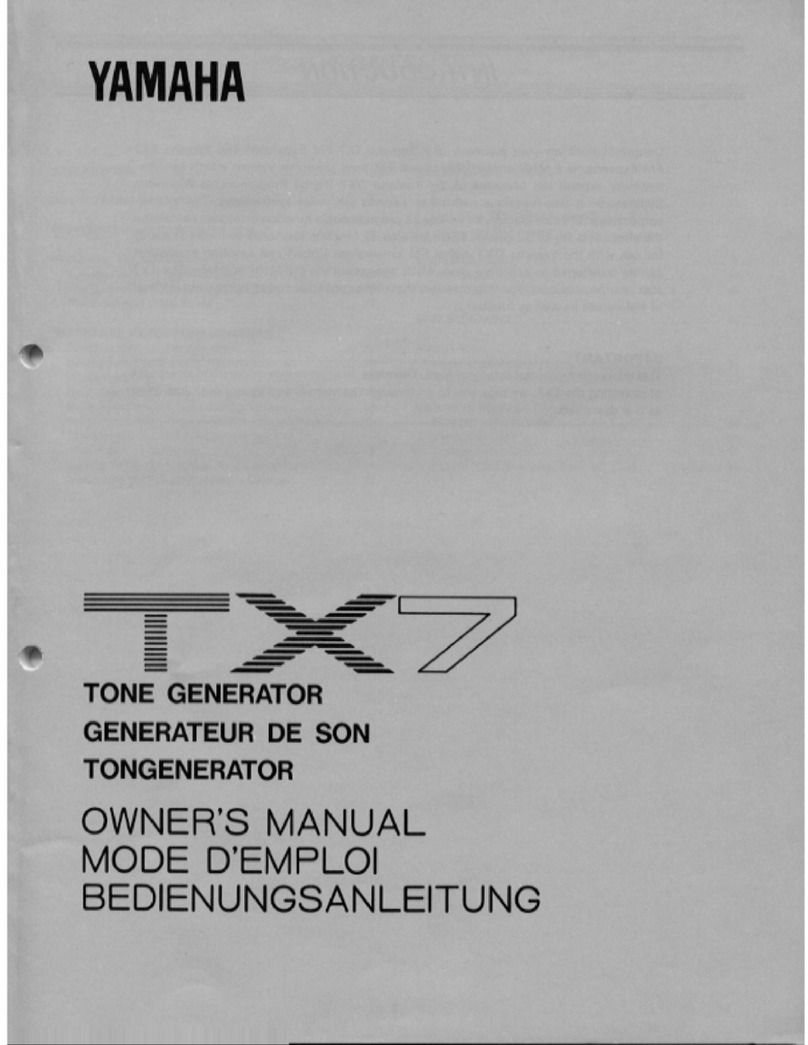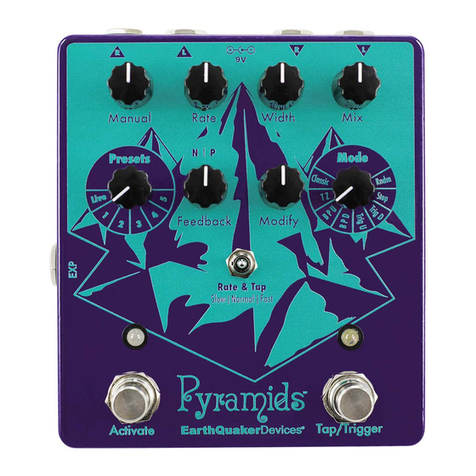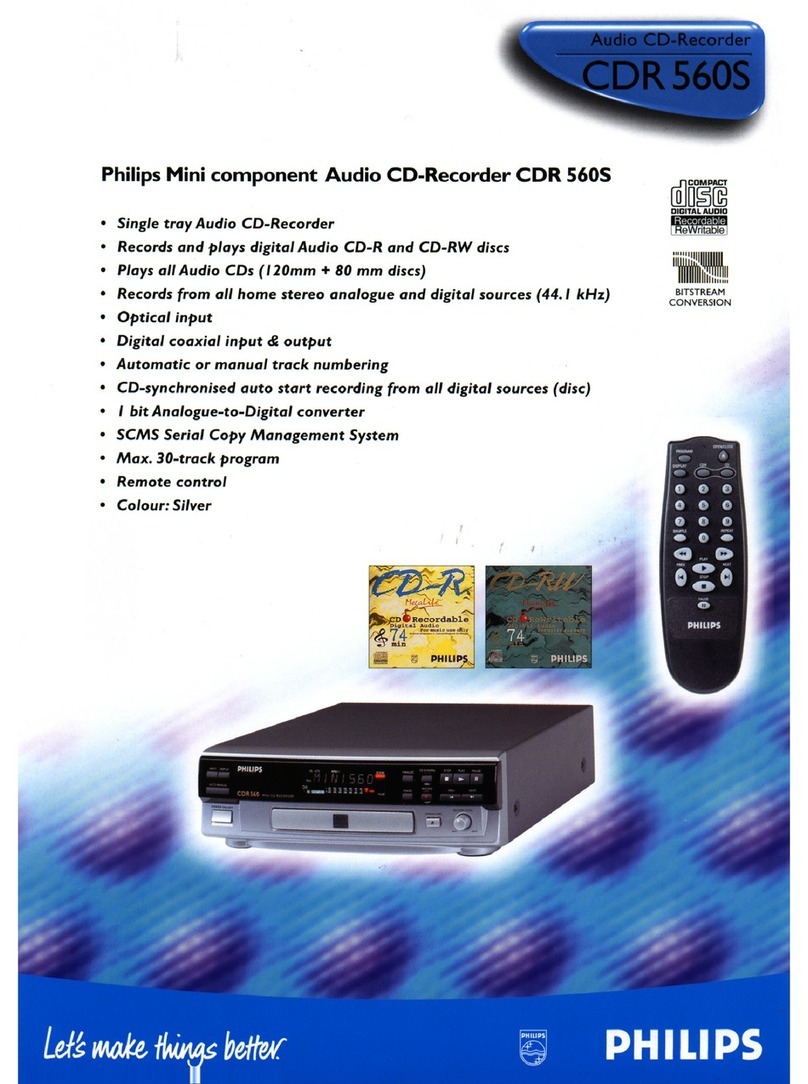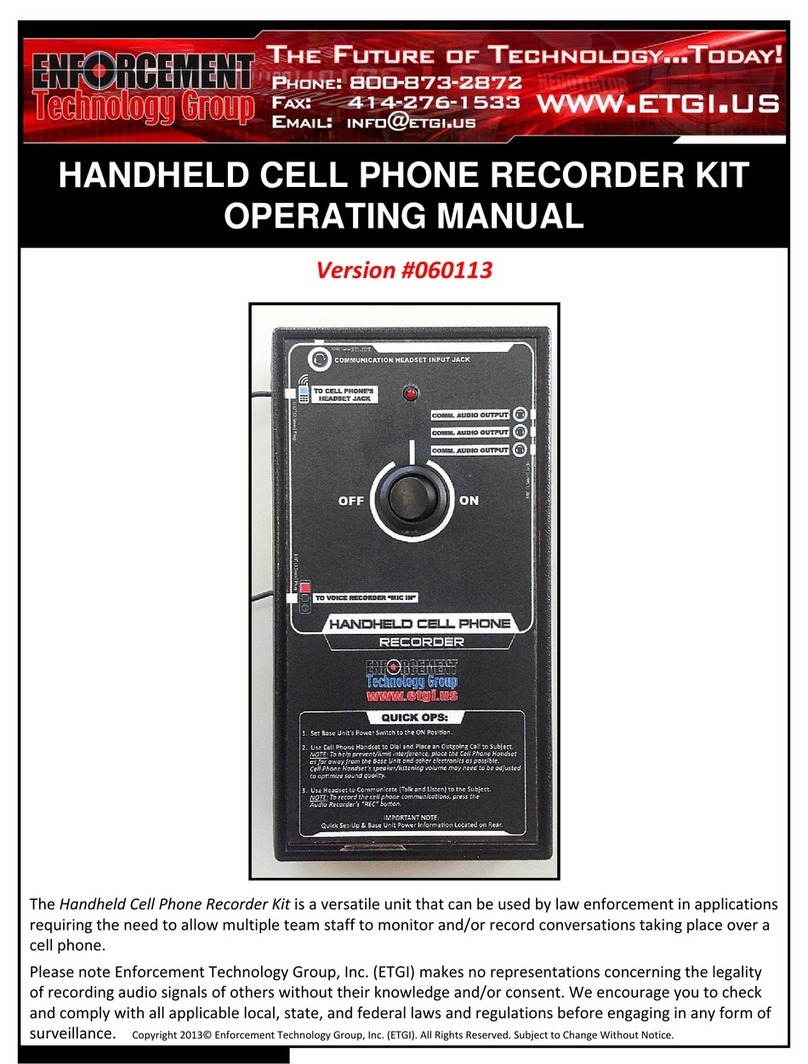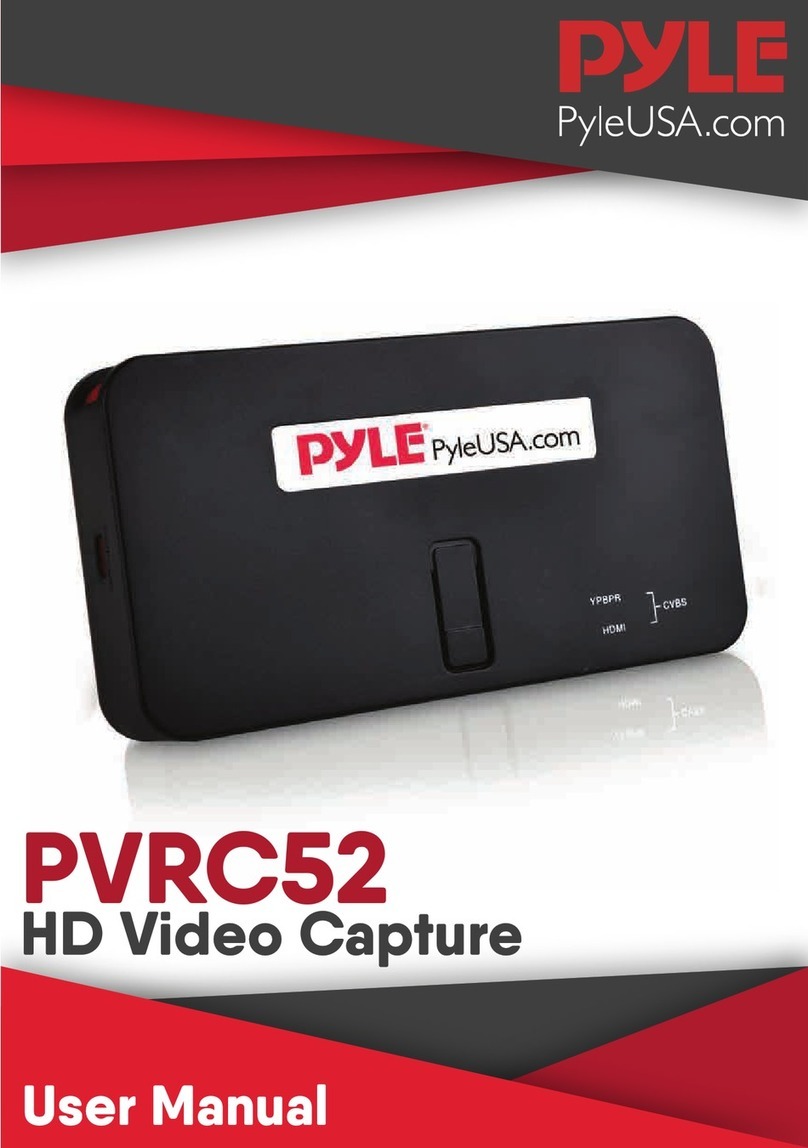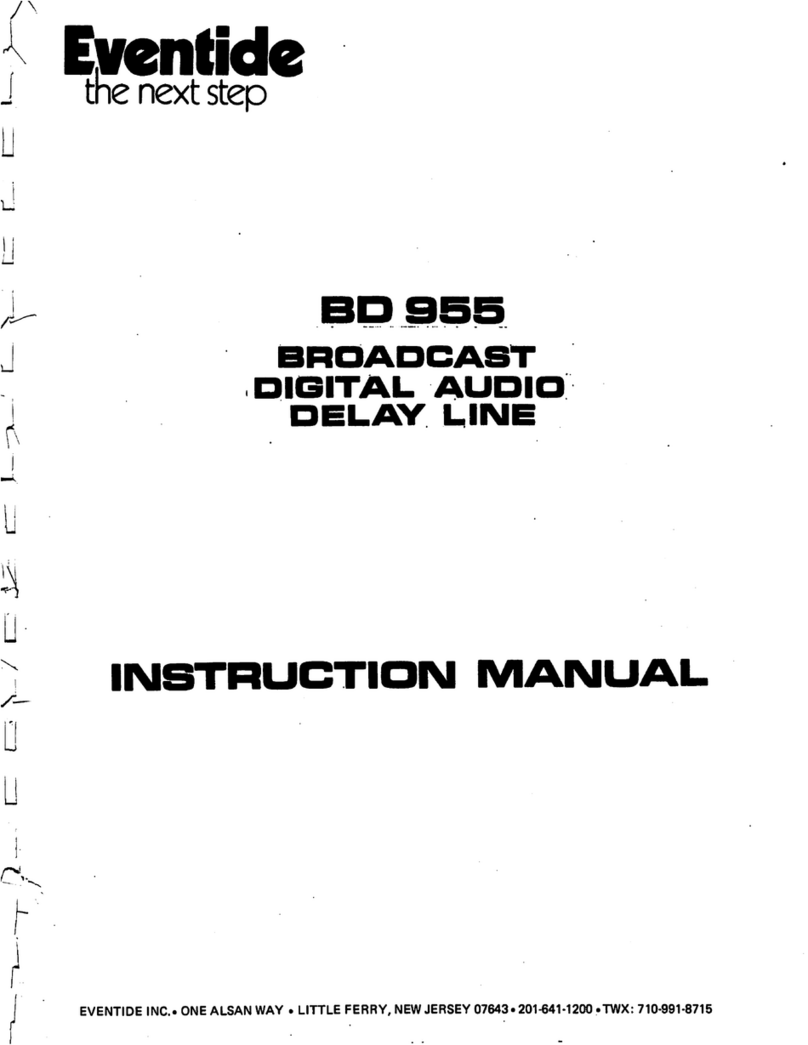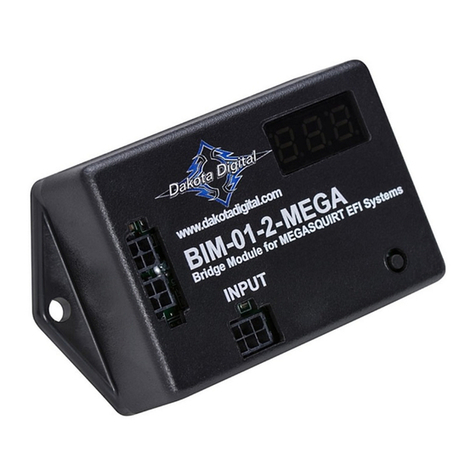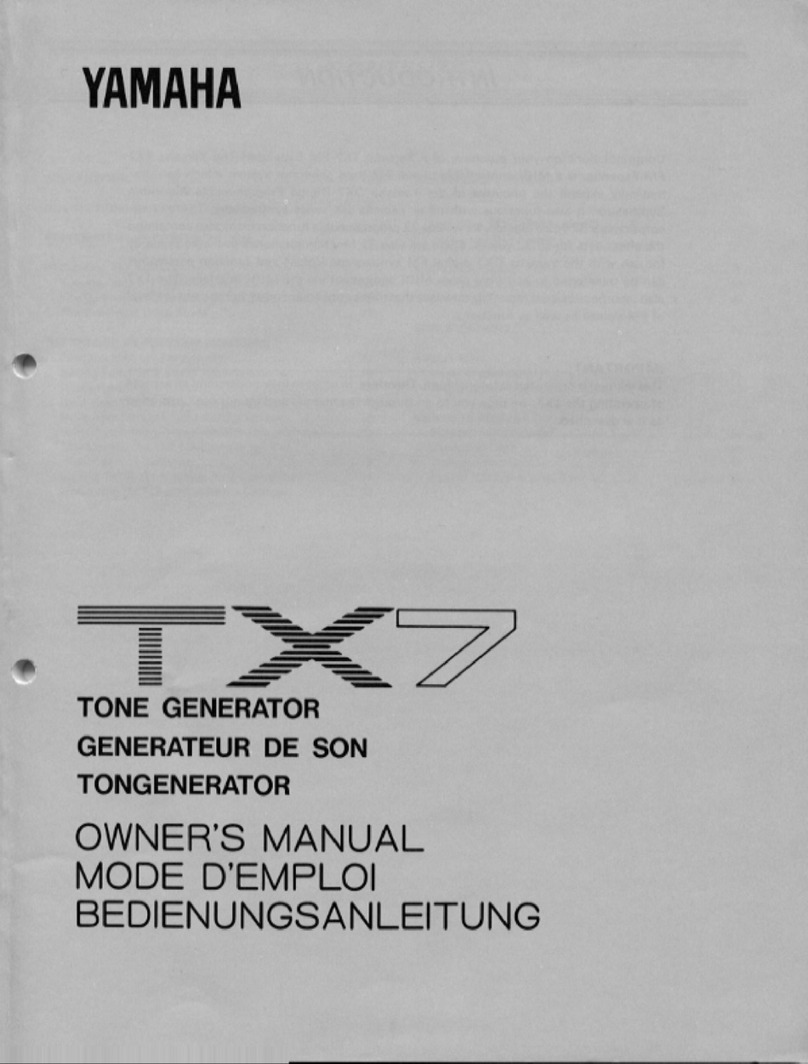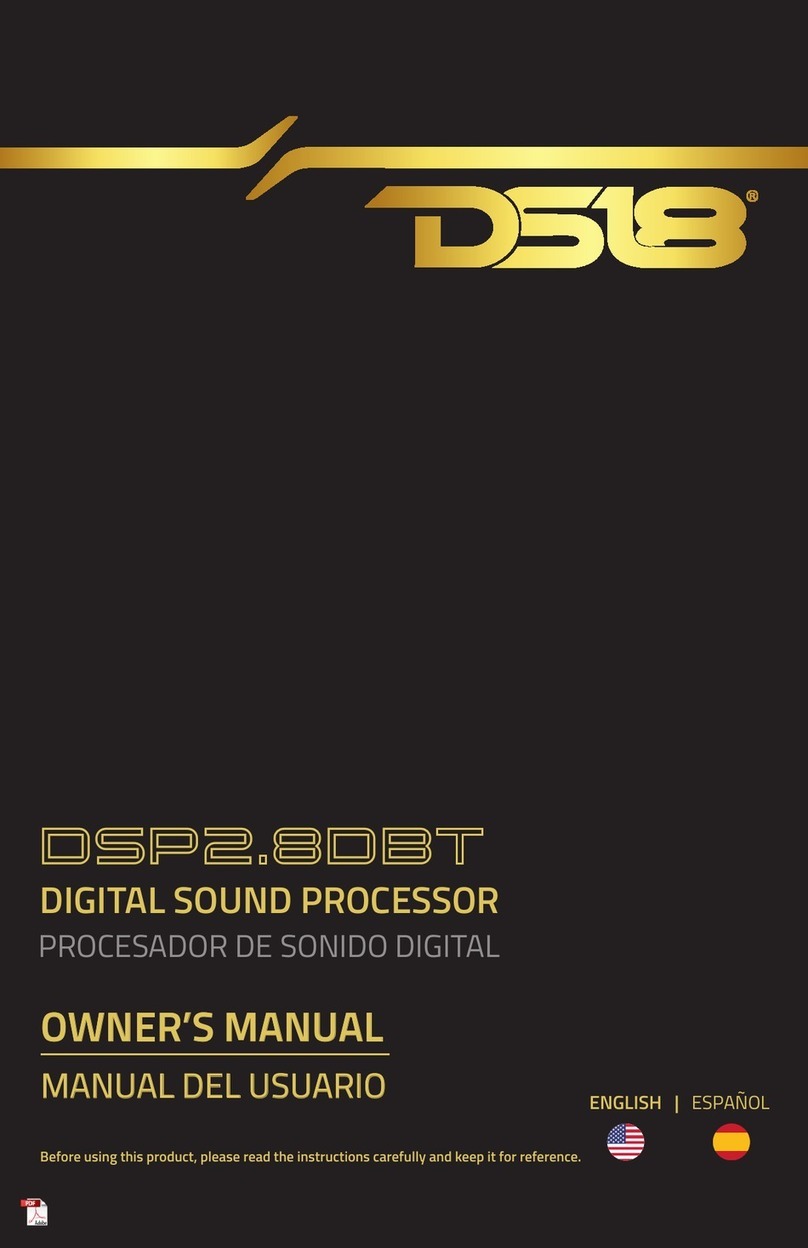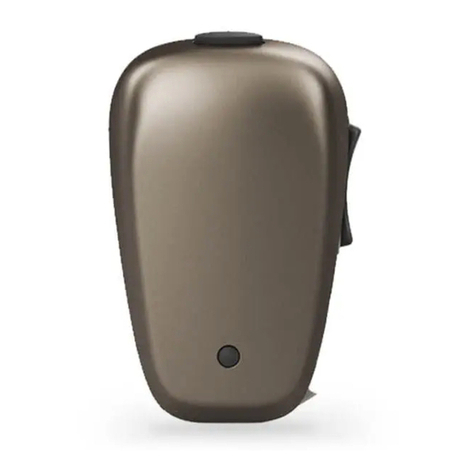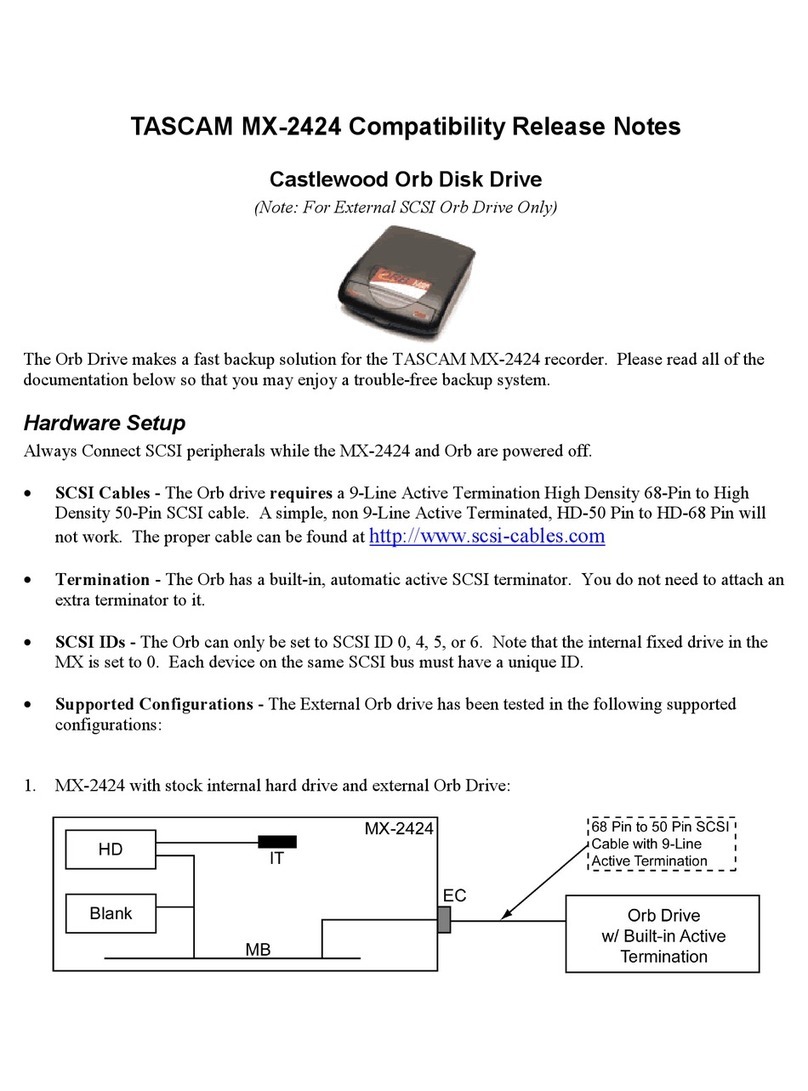CircuitWerkes DR-10 User manual

1
CircuitWerkes
Technical Manual
CircuitWerkes
http://www.circuitwerkes.com
(352) 335-6555 · Fax (352) 380-0230
3716 SW 3rd Place · Gainesville, FL 32607 U.S.A.
c 1992-1997 CircuitWerkesAllRightsReserved.Allinformationcontainedwithinisproprietary.
NopartofthismanualmaybereproducedorcopiedwithouttheexpresswrittenconsentofCircuitWerkes.
DR-10
Dial-up Remote Control
and Audio Interface
401a (v1.30)

2
Contents
OPERATIONAL OVERVIEW .................................................................................................... 3
GETTING STARTED QUICKLY................................................................................................ 3
CONNECTIONS ................................................................................................................... 4
DEFAULT SETTINGS ............................................................................................................ 5
DEFAULT RELAY SETUP ....................................................................................................... 6
STATUS INPUTS ................................................................................................................. 6
USING THE STATUS INPUTS AS ALARM INPUTS ........................................................................ 7
AUDIO FLOW DIAGRAM ....................................................................................................... 7
OPERATION AND PROGRAMMING DETAILS ............................................................................. 8
DIRECT ACCESS FUNCTIONS ................................................................................................ 8
SETUP MODE. ............................................................................................................. 9
SETUP VARIABLES ........................................................................................................... 10
ABOUT CODE SELECTION.................................................................................................... 11
DR-10 P.C.BOARD LAYOUT............................................................................................ 12
DR-10AUDIO/TELCO SCHEMATIC .................................................................................... 13
DR-10LOGIC SCHEMATIC ............................................................................................... 14
TROUBLESHOOTING GUIDELINES ........................................................................................ 15
OPERATIONAL EXAMPLES ................................................................................................. 16
APPENDIX B.................................................................................................................... 17
{INFORMATION THE FCC MAKES US INCLUDE...} ................................................................ 17
CIRCUITWERKES LIMITED WARRANTY ............................................................................... 18
REPAIR OR SERVICE INFORMATION ....................................................................................... 18
Contacting CircuitWerkes
If you need technical assistance or product information for any of our products please feel free to
call us at (352) 335-6555 from 10am to 6pm Eastern time Monday through Friday. You can fax
questionsorcommentstousat(352)380-0230. WeALWAYSvaluefeedbackfromourcustomers!
currenttechmanualsfromourInternetwebsiteathttp://www.circuitwerkes.com/. Inadditiontothe
manuals, currentproductinformationsheetscanbefoundthereaswell.
SILENCER & CP-1 INFORMATION (IF YOUR DR-10 IS SO EQUIPPED) IS AT THE END OF THIS MANUAL.

3
The CircuitWerkes DR-10 Dial-up Remote Control and Audio Interface
Thanks for buying the CircuitWerkes DR-10 dial-up remote control and audio interface. The DR-10
comes ready to plug in and start working; we've factory programmed it with default settings that will
make it immediately useful for a large number of purposes. Of course, just about everything that
has a default setting can be customized by the user if needed
OPERATIONAL OVERVIEW
The DR-10 is a microprocessor based remote control that lets you operate your station's equipment
from anywhere there's a phone. It automatically answers the phone on a user set number of rings
and waits for you to enter your password (from none to 8 digits). After entering your password, a
dedicated relay closes that you can use as an external control or an unlocked indicator. Now you
have complete control of the DR-10's main relays. They can be individually programmed for
momentary (leading edge or trailing edge), latching or interlocked operation. Each relay can be
programmed to decode any of the 16 DTMF tones. Any relay can be tied to any other for modes
such as latching and interlocked. Relays can return a beep acknowledge tone that tells you when
you've activated an output. The DR-10 allows one or two digit relay codes and features our famous
anti-falsing delay (now adjustable) that helps prevent accidental contact closures when you're using
it for remote broadcasts.
The DR-10 has four logic level inputs that can be set up as query-only status inputs or can be
programmed to automatically activate any relay and/or call your pager or other telephone number.
When an alarm happens, the DR-10 can tell you which channel caused the alarm with a series of
beeps. Each status/alarm input can dial a different number up to 24 digits long including pauses.
The DR-10 features an audio hybrid that allows you to control the unit while monitoring an external
audio source. That makes the DR-10 a great choice for EBS/EANS monitoring, remote controlled
audio switcher, etc. Of course, an active, balanced telephone audio feed is brought out so that you
can put the telephone audio on the air or into a recorder. An external audio input lets you control
the DR-10 from RPUs and other sources. Additional ground sink outputs occur when the DR-10
seizes the phone line and when it hangs up. Programming is easily done from any DTMF
telephone. The DR-10 is compatible with both the Silencer and call progress decoder options. The
Silencer Option is a daughterboard that takes its audio feed from the DR-10 and removes the DTMF
tones. The DTMF-free audio is routed to the DR-10's Audio Out screw terminals.
GETTING STARTED QUICKLY
Your particular installation plans will dictate whether you want to wire or mount your DR-10 first.
Wall or Rack mount your DR-10. We've included stainless steel rack screws and nylon washers if
you purchased your DR-10 with a rackmount kit. If you decide to wall-mount your DR-10, the
distance between the mounting screws should be 10-7/16". You can mount the DR-10 in any
position, just try to keep it away from high humidity or excessive heat.
The telco coupler in the DR-10 is designed to take some abuse from phone line transients and the
like, however, if you are in a lightning prone area we recommend installing a telephone line surge
surpressor on the Telco Line jack of the DR-10.

4
CONNECTIONS
The DR-10 screw-terminal strip.
The screw terminal connections are fairly straight-forward. From left to right:
Normally Open contacts from relays 1-8. These contacts are rated at 10VA. If you need to switch beefy
current or voltages, you will need to slave a beefy relay to any of these closures.
Form C contacts from relays nine and ten. These contacts are somewhat tougher than those on relays 1
through 8; however, we do not recommend running line voltage, high current, or heavily inductive or
capacitive loads through them. Contact a qualified electrician if you need to switch line voltages.
There are two sets of FORM C contacts from each of relays nine and ten. The contacts are marked NO1 ,
NO2, NC1, NC2, COM1, and COM2. These markings correspond to the two sets of contacts for each relay
normally open, normally closed, and common.
AUX O/C . This is an open collector output that occurs when the DR-10 answers a telephone call. It can be
programmed as either momentary or latching for the duration of the call.
LOCKED O/C. This is an open collector output that pulls low if the unit is LOCKED.
DISABLE. If this pin is grounded no relays can change states. Other functions operate normally. Any
relays that were latched before the disable input was grounded will maintain their state.
CALLEND. O/C low sent to this pin when the DR-10 hangs up.
STAT1 through STAT4. These four TTL compatible inputs can be querried from your audio connection.
Entering #1, #2, #3, or #4 will cause the unit to respond with the input's high or low status. One beep
indicates an unchanged (internally pulled up) status, two beeps indicates that the input is pulled low.
AUX IN + and -. Buffered auxiliary audio input. This input feeds the DTMF decoder on the DR-10. It is an
electronically balanced input that can be fed from practically any source. It is factory set to accept audio at
0dBm nominal levels. The audio from the Aux input also feed the Silencer Option if your DR-10 is so
equipped. Be sure to ground the - input if you are feeding unbalanced audio.
AUD OUT + and -. This is the balanced audio output of the DR-10. It is normally incoming telco audio
from the coupler/hybrid. The nominal level is factory set for peaks at around 0dBm. This level varies
widely from one telco CO to another. Both outputs are active; do not attach either to ground. If your DR-
10 is equipped with a Silencer, your balanced Silencer audio comes out here.
SEND + and -. Hook up the audio you want to send down the telco line here. If unbalanced, be sure to tie
the - input to ground. This input is set up for a nominal 0dBm input level.
PWR. Connect the stripped and tinned leads of your power supply here. If you choose to use a power supply
other than the one we send with the DR-10, be sure it can provide at least 200 mA continuously at 12 to 18
volts dc or ac. For Silencer equipped units we recommend using the 15Vdc supply included with the
Silencer.
Programming Phone Jack. This is a powered RJ-11 jack for plugging a standard dtmf equipped telephone
into the DR-10 for local control or programming functions. DO NOT ATTACH A TELEPHONE LINE to
this jack.
Telco Line Jack. This is the ONLY place to connect a phone line to your DR-10. The line must be a
standard dial-up line.
Callend

5
Hybrid Null Adjustment: The hybrid null adjustment potentiometer (vr1) is located just to the left of
the Telco Line Jack. The purpose of nulling a phone line attached to the DR-10 is to allow the DR-
10 to reliably receive dtmf tones from the caller while sending audio (cue return, listen line or
whatever) down the line to the caller. The easiest way to set the null is to call up the DR-10 enter
the appropriate UNLOCK password and enter #5. the #5 command makes the DR-10 generate a
constant tone, for 30 seconds, which gets sent down the phone line. Listen to, or measure the audio
voltage on, the AUD OUT port of the DR-10 (not the calling telephone) while you adjust the NULL
potentiometer for the lowest audio level.
DEFAULT SETTINGS
Settings Default value User programmable options
rings to answer 2 Can be set to answer on 1 to 8 rings
password checking enabled Sets whether the DR-10 automatically locks at the
beginning of each call and enables the ten-second
hanguptimer.
unlockpassword 6736 Entering this password when the unit is locked will
cause it to unlock which allows you to remain online
and access DR-10 functions. Entering the unlock
password also clears any pending alarms. All DR-10
passwords (lock, unlock, listen) can be up to eight
characters from the phone pad. The only restriction is
that # cannot be first character.
lock password 5625 Places the unit in "locked" mode. While locked the
DR-10 will answer calls on the programmed ring but
will not allow access to any of the command or status
functions until after the UNLOCK password is entered.
A locked DR-10 will hang up on the caller if password
checking (above) is enabled and if the correct
unlock (or listen; see below) password is not entered
within the first ten seconds of the call..
Listen password 5478 This password merely allows the caller to remain on the
line, "listening" to send audio. No control or status
functions are available to a caller who enters the listen
password.
Global beep enable enabled When this setting is enabled the individual programming
of each relay determines whether a beep gets sent down
the phone line after the relay fires. (two beeps on a
relay OFF command) If this option is
disabled no acknowledge beeps will be generated after
any command.
Aux output action momentary Momentary or latching. This setting controls whether
the aux ground sink, which occurs when the unit
answers a call, is momentary (about 300mseconds) or
remains active (latched) for the duration of the call.
DTMF binary out disabled This option routes binary touchtone data and a strobe to
relays 1-5 if the unit is not locked. This feature is
particularly useful for interfacing to certain routing
switchers or other devices that take a data bus feed.
AutoLock on hangup enabled When enabled the dr10 will automatically lock itself at
the end of any call. When disabled, the DR-10 can still
be locked with the lock password.

6
DEFAULT RELAY SETUP
This table shows the default relay setup for the ten output relays on the DR-10.
Each relay has its own set of independently programmable parameters including one or two digit on
and/or off codes, and operation mode: momentary, latching, or interlocked.
Mode 1=momentary, 2=latching, 3=interlocked-latch
relay # mode digits oncode offcode beep or no beep
01 1 1 1 n/a no beep
02 1 1 2 n/a beep
03 1 1 3 n/a no beep
04 1 1 4 n/a beep
05 3 2 55 *# no beep
06 3 2 66 *# beep
07 3 2 77 *# no beep
08 3 2 88 *# beep
09 2 2 9* *9 no beep
10 2 2 0* *0 beep
By default, even relays (2,4,6,8,10) send a short acknowledge beep down the phone line to let you
know the command was received. For certain functions involving on-air use you'll want to have
relay closures that don't beep back down the line; odd relays (1,3,5,7,9) do NOT beep when
activated. It is very easy to change which relays beep, see relay programming on page 10.
Relays 1 through 4 are momentary (mode 1), single digit activated with DTMF tones 1-4
respectively.
Relays five through eight are interlocked-latching (mode 3). Only one interlocked-latching relay
will be active at any time, because activating one of these relays will unlatch any other relay
programmed as interlocked-latching. The DTMF ON-codes for these relays are two-digits, 55, 66,
77, 88 respectively. Since they all share the same OFF-code, you can unlatch any of them with *#.
Relays nine and ten are DPDT (form C contacts) latching (mode 2) affairs. The relay's ON-code, 9*
or 0*, latches it on, the relay's OFF-code, *9 or *0, turns it off.
STATUS INPUTS
The DR-10 has 4 TTL compatible status inputs that you can "read" during your telephone call or
from a programming phone. These inputs are pulled up on the DR-10 (weak, 100k pullups) and
accessed with codes #1, #2, #3, and #4 respectively. If the status input is not triggered when you
query it the DR-10 will beep once down the line. If the status input is pulled low by an external
connection it will beep twice. You can program the dr-10 to activate any one of its ten relays
whenever the associated status input gets pulled low. When a status input activates an associated
relay the relay programming table is over-ridden and the relay is held on until the unlock code is
entered, clearing the status tripped flag. The status relay will not be tripped again by the same status
event; in other words, the status input must be "untriggered" and get triggered again before its
associated relay will be tripped again. None of the status inputs are factory-set to activate relays.
See page 11 for instructions on how to associate a status input with a relay.

7
AUDIO FLOW DIAGRAM
The Audio Flow Diagram above gives you a decent overview of the audio paths in the DR-10. Note
that the Aux Audio input has nothing to do with telephone send or receive audio. This port is
included for those of you that wish to use RPU audio or some other audio feed to operate the DR-10.
This is particularly useful if you've purchased the Silencer option for your DR-10 as the Silencer can
be fed audio with DTMF TONES either from the phone line (via the MPC-3 Telco Receive port)
OR from your aux audio source. The Silencer removes the DTMF tones from the audio feed. The
balanced output of the Silencer is routed to the DR-10's Audio Out connections on the terminal strip.
For more information about the Silencer option contact your CircuitWerkes dealer or call us!
USING THE STATUS INPUTS AS ALARM INPUTS
The DR-10 can dial out too! If you program an alarm phone number for a status input the DR-10
handles the input as an alarm input. It will dial out to the programmed phone number. The phone
number can include pauses represented by the * character (2 seconds pause for each *). The pause
character is included mainly for paging systems where you wish to dial a number, pause a few
seconds for the system to answer, and then send a pager message. The unit will continue to dial out
every three minutes up to 10 times (user programmable) until you enter the unlock code. You can
enter the unlock code by calling the unit directly or when the unit calls you at the alarm phone
number, if it is not a pager. You can also enter the unlock code with a phone attached to the
programming port or with an audio feed into the aux audio input connections. See page 11 for
instructions on programming an alarm dialout number for a status input.

8
OPERATION AND PROGRAMMING DETAILS
Your DR-10 is controlled and programmed by DTMF tones. Control functions (like relay activation,
status check) are usually accessed by dialup phone connection or or by connection of a DTMF source
to the AUX audio input of the DR-10. Programming can be done the same way but is often more
conveniently accomplished by plugging a generic (TouchTone) phone into the DR-10's, RJ-11,
programmingjack.
The following discussion of control and programming functions assumes you have successfully
connected to the DR-10 and have already entered the UNLOCK code (the green LED on the unit's
front panel is on).
DIRECT ACCESS FUNCTIONS
These functions are available when the DR-10 is UNLOCKED and has not been placed in SETUP
mode with the SETUP code. In other words, just about anytime in normal operation, as long as the
unit is unlocked.
Whathappens
entering '1' causes a momentary (approx 0.2 seconds) closure of relay one.
'2' causes a momentary closure of relay two.
'3' causes a momentary closure of relay three.
'4' causes a momentary closure of relay four.
'55' latches relay five closed until another interlocked relay is activated OR
the Off-code '*#' (asterisk and pound symbol on dtmf keypad) is entered.
'66' latches relay six until another interlocked relay is activated or '*#' is
pressed.
'77' latches relay seven until another interlocked relay is activated or '*#' is
pressed.
'88' latches relay eight until another interlocked relay is activated or '*#' is
pressed.
'9*' latches relay nine until '*9' (DTMF asterisk and nine) is pressed.
'0*' latches relay ten until '*0' is pressed.
Modes: M=momentary, PM=momentary on trailing edge, I=Interlocked,
L=Latching. The complete default relay table is on page 6.
DTMF Tone(s) Entered.
Relay ON / Off Mode
01 1 n/a M
02 2 n/a M
03 3 n/a M
04 4 n/a M
05 55 *# I
06 66 *# I
07 77 *# I
08 88 *# I
09 9* *9 L
10 0* *0 L
"reads" status input one. Beeps once if untriggered, twice if triggered.
"reads" status input two. Beeps once if untriggered, twice if triggered.
"reads" status input three. Beeps once if untriggered, twice if triggered.
"reads" status input four. Beeps once if untriggered, twice if triggered.
Status inputs are internally pulled up (100k pullups). Pulling them low triggers them.
Initiates a 30 second tone generator used for setting levels and hybrid null.
Forces the DR-10 to hang up immediately.
Adds one hour to inactivity hangup timer. See page 10 for details.
'9999' puts the DR-10 in SETUP MODE. The unit will stay in setup mode
until a valid setup entry is completed, or an invalid entry occurs, or if
several seconds pass with no dtmf entry. A successful setup entry is
followed by three quick beeps. A timeout or error ends in ten beeps.
#1
#2
#3
#4
#5
#6
#7
9999

9
SETUP TOGGLES
prefix toggle
9999 20
9999 21 (default)
9999 22 (default)
9999 23
9999 30 (default)
9999 31
9999 32
9999 33 (default)
9999 40
9999 41 (default)
9999 50 (default)
9999 51
9999 60
9999 61 (default)
9999 62
9999 63 (default)
9999 70 <relay number>
9999 71 <relay number>
Disables autolock of DR-10 at pickup
Enables autolock of DR-10 at pickup
DTMF binary out disabled.
Sends DTMF binary data to the first five relays, data a-d and strobe
respectively.
DR-10 keeps relays in their last (pre-lock) states when unit gets locked.
All relays are cleared to the OFF state anytime the DR-10 gets locked.
Turns off auto-lock on hangup. Leaves unit unlocked between calls.
DR-10 automatically locks at end of a dial-in connection.
Globally turns off relay ackowledge beeps.
Global enable of relay acknowledge beeps. Individual relay beeps can still
be disabled or enabled with the 70/71 toggle below.
Makes the Aux O/C output momentary at pickup.
Makes the Aux O/C output stay active for the duration of the call.
Disables the Listen Password.
Enables the Listen Password. (5478 default) allows connection w/o control.
Send no automatic DTMF tones depicting alarm status (on alarm dialout).
Send automatic DTMF tones depicting alarm status (on alarm dialout).
Individuallydisablesacknowledgebeepsforrelay.
Individuallyenables acknowledgebeepsfor relay. Globalacknowledge
beep enable must be on (toggle 41) for this to work. See defaults on p6.
SETUP MODE.
There are two distinct groups of setup functions: toggles, and variables. Toggles are simple software
switches that generally enable or disable DR-10 functions. Variables are storage items that you can
change to make the DR-10 better fit your needs. Dialout numbers and relay ON/Off codes are good
examples.
To access SETUP functions you must first have the DR-10 UNLOCKED and then enter the SETUP
prefix, 9999. When you enter setup mode the DR-10 beeps one long and two short beeps. A single
beep follows each element of the setup sequence; and a series of three short beeps follows when the
setup item is successfully stored. If you enter illegal values the unit will "error out" giving you a
series of ten short beeps and exiting setup mode.

10
SETUP VARIABLES
Just like the Toggles, already described, setup variables require the setup prefix. Setup variables are
generally longer than toggles; we recommend that you write down your entire "setup string" before
entering it. In the examples below, data between these bracket symbols < > will indicate a user-
specified variable. In all setup operations relay numbers are two digits 01, 02, .., 09, 10. For
example, if a setup string includes <relay no.> you would replace that bracketed portion with 04 if
you were setting up relay four.
Lock Password 9999 91 <number of digits> <password> <password again>
(default = 5625) example: '9999 91 6 123456 123456' sets unlock p/w to 123456
Unlock Password 9999 92 <number of digits> <password> <password again>
(default = 6736) example: '9999 92 3 505 505' sets the unlock password to 505
Listen Password 9999 93 <number of digits> <password> <password again>
(default = 5478) example: '9999 93 4 90*# 90*#' sets the listen password to 90*#
Answer Ring Count 9999 94 <rings> # sets the number of rings to answer on. '#' signifies end.
(default = 2) example: '9999 94 6 #' sets the DR-10 to answer after six rings
Dialout Timeout 9999 95 <seconds> # This determines how long the DR-10 waits for a
(default = 16) password if it dials out on an alarm.
example: '9999 95 20 #' The DR-10 would hang up after 20 seconds if no
password was entered after dial-out.
InactivityHangup 9999 97 <minutes> # Hangs up the DR10 if there are no DTMF tones
(default = 0) received in programmed number of minutes. Set to 0 disables the feature. #7
while online will increase the timeout by 60 minutes each time it is entered (up
to 4 hours).
Max Dialout Tries 9999 96 <tries> # This determines how many times the DR-10 will call the
(default = 3) programmed alarm number if none af the attempts are anwered with an unlock
password. The Unlock password clears all alarms until they end and retrigger.
example: '9999 96 4 #' sets to four tries.
AlarmDialNumbers 9999 8 <status/alarm input number 1-4> <number to dial> # Sets up a status
(default = none set) input to dial the programmed number if the status/alarm input is pulled low. #
ends the dial string; * in the dial string equals a 2 second pause. Up to 24
digits are allowed in the dial string.
example: '9999 8 1 555 1234 #' would set status /alarm input one up to
dial 555-1234 if the input is triggered. The unit would then send an alarm
identifier string of dtmf tones (in case the unit is dialing a pager) that would
effectively identify which status/alarms had been triggered. The format of the
identifier string is two leading zeroes and the number(s) of the alarm(s)
triggered. in this case '001' would be dialed by the DR-10 a few seconds after
the programmed number was completely dialed. The identifier string will
repeat itself every six seconds uintil either the unlock code is entered (clearing
all pending alarms) or the receiving end of the dialout hangs up.
See "U
SING
THE
STATUS
INPUTS
AS
ALARM
INPUTS
"
on page 7 for
operationaldetails.
Anotherexample: '9999 8 4 1800 555 1234 **** 4221 #' would set up status/alarm input four
to dial 1-800-555-1234, wait eight seconds, then dial 4221.

11
Associatingarelay
closure with a status
/alarminput.
Setup Variables Continued
9999 <85, 86, 87, or 88> <relay number> Sets up a relay (relays one through eight
only) to activate anytime a particular status input is triggered. The relay remains
triggered until the unlock code is entered. If the unlock code is entered while the event
is still triggering the status input the relay will not reactivate until the triggering event
stops then starts again.
The associated relay function supercedes any other relay programming.
85 sets up a relay for status input 1.
86 sets up a relay for status input 2.
87 sets up a relay for status input 3.
88 sets up a relay for status input 4.
example: '9999 85 06' sets relay six to activate anytime status input 1 is triggered.
NOTE: associating relays with status inputs does not require them to be set for dial-
out; the alarm / dial-out function is independent of whether a relay is associated with
a particular input.
9999 <relay number> <mode> <1 or 2 digits> <On-code> <Off-code>
ChangingRelay
Activation/
Deactivation codes This setup string will define how and when a particular relay acts. The setup string
specifiesfivethings:
1. <relay number> this is the two-digit number (01-10) of the desired relay.
2. <mode> this is how the relay acts. See NOTE A below.
'1' = momentary. The closure occurs at leading edge of detected tone and will
last approximately 200 milliseconds or for the duration of the tone
(whichever is longer). No OFF-code is required (or accepted) for
relays with mode=1.
'2' = latching. The closure occurs when the ON-code is received and
remains on until the OFF-code is received.
'3' = Interlocked. All relays that are set up as interlocked act much like
latching relays except that only one interlocked relay will be
allowed ON at any time. Activating an interlocked relay will
turn off any other interlocked relay that was ON. The off code
on an interlocked relay can also be used to turn it off.
'4' = Momentary on trailing edge of tone. 200 millisecond duration.
3. <1 or 2 digits> enter a '1' for setting up a single digit code or a '2' for a two
digit code. This is the length for the Oncode and (if applicable) the Off-code.
4. <On-code> the one or two digit activation code for the relay. Can be any
digit(s) on the standard telephone keypad including * and #. A-D in the
extended dtmf set can also be used.
5. <Off-code> this dtmf digit or pair of digits deactivates the relay in question.
This applies only to latching or interlocked relay modes. Just like the
On-code, any valid dtmf tone (including A-D) can be in the Off-code.
There is no Off-code for a momentary relay. If you are setting up a
momentry relay, the DR-10 will leave programming mode and beep at
you happily after you enter the ON-code... not even giving you th
echance to enter an Off-code.
Please Read 'A
BOUT
C
ODE
S
ELECTION
' below.
NOTE A: If you wish to disable a relay from dtmf activation (if you want the relay dedicated ONLY to status/alarm
action or if you wish to use it solely in DTMF binary out mode) set its relay mode to 0.
IMPORTANT NOTE ABOUT CODE SELECTION. (AKA CHOOSING WHICH DTMF TONES ACTIVATE YOUR RELAYS)
Relays can have one or two digit codes. Passwords can be up to eight digits in length. Care must be taken to avoid
conflicts between programmable passwords, programmable relay codes, and preset access codes for things like
checking status inputs and generating a test tone. The preset (non-programmable) features are grouped under a
common first digit, the pound symbol <#>. You cannot start programmable codes or passwords with #. You must avoid
selecting passwords and relay codes that conflict with each other. For example, the default relay code for relay one is
simply <1>. If any of your programmable passwords are changed so that their first digit is a <1>, the unit will never "see"
the password. The <1> will fire off relay one and the next digit will be considered the first digit of the next code.

12
560
.01
47k
330k
2M
2M
2M
DR-10 P.C.BOARD LAYOUT
Callend

13
DR-10 AUDIO/TELCO SCHEMATIC

14
DR-10 LOGIC SCHEMATIC

15
TROUBLESHOOTING GUIDELINES
If you experience troubles with your DR-10, please check the obvious stuff like power supply, audio
connections, etc. first. If the unit stops responding to commands, check to see if it is locked. The green LED
sticking out of the front panel will be on anytime the unit is UNLOCKED and ready to receive commands.
The red LED just beside the green one (also sticking out of the front panel) is a power on indicator. Removing
the top cover will expose two more leds in the same general vicinty as the POWER and UNLOCKED
indicators. The yellow one is the program mode LED. It comes on and stays on only while the unit is in
programming mode. The red led (labelled dv, d217) is the dtmf strobe. It lights up during a valid dtmf tone.
If you get hopelessly lost or wish, for any reason, to reset the DR-10 to factory defaults: remove power from
the DR-10. Remove the top cover. Instructions for disassembly and reassembly are on page 16. Depress
and hold the reset switch while turning on power to the unit. The default variables and toggles are now
restored. All programmed dial-out numbers are cleared too.
IMPROPER DIAL-OUT: If your DR-10 is set up to with dial-out alarms and your preprogrammed numbers
are not dialing properly first try to renull the hybrid. If the null is significantly off, the dialing dtmf tones may be
attenuated or selectively filtered (skewed). Another possible cause of improperly dialed numbers is to much
send level. The send level adjustment (vr103) determines how much outbound audio, including touchtones gets
sent to the hybrid, If you overdrive the hybrid it will distort the DTMF tones and they will not register properly
with the telephone company.
FAILURE TO DROP OFF LINE AT THE END OF A CALL: The coupler section relies on what is
generally called " CPC" or " Calling Party Control" to signal that the calling party has ended the call. CPC is
just a brief drop to zero of the line's battery voltage. A few telephone companies and many office phone
systems do not generate the CPC pulse that the DR-10 (and almost any other auto-answering device)
requires to tell it to hang up. The DR-10 has two, built-in methods for handling this problem. First, the DTMF
command #6 will cause the DR-10 to hang up. Second, you can set the DR-10 to hang up if no DTMF tones
are recieved for a user set number of minutes. See page 10 for setting this feature. CircuitWerkes also
offers a third solution for this problem. It is the CP-1 call progress tone decoder. Most office phone systems
and PBXs DO generate a dial-tone or busy (reorder) tone to an off-hook extension when the calling party
hangs up; the CP-1 detects the presence of those tones and tells the DR-10 to hang up the line. The
advantage of the CP-1 over the inactivity timer is that it causes the DR-10 to drop the line and be available
immediately. Also, you do not have to keep issuing commands to the DR-10 at times when you want to be
online for more than the timer interval. Call us to see if the CP-1 is right for you.
ABOUT CONNECTING TO OFFICE PBXs: If you connect your DR-10 to the analog port of an office
phone system two problems may arise. The unit's hybrid may not null properly, see HYBRID NULL
ADJUSTMENT on page 3; and the coupler section may not drop the line properly at the end of a call (see
above).
The DR-10 is built to withstand a reasonable amount of rough handling. Rarely (but still worth mentioning)
with our telco interface products, we have a customer that gets a unit that seizes the line and won't release it.
Strange as it sounds, even turning off the unit's power doesn't help. If your DR-10 seizes the telephone line as
soon as you plug it in: Check to see if the same thing happens if you remove power from the unit. If it does,
drop the unit from two to four inches onto a hard surface. It's best to do this with the little rubber feet
attached to the bottom of the unit; take the rack panel off first, if so equipped. This should jar the line-seize
relay free. This problem is a mechanical latchup of the line-seize relay typically caused by rough handling
during shipping. The relay manufacturers we deal with assure us that such (very rare) mechanical latchups
don't contribute to premature failure of the relays. The shipper said "Oops."

16
OPERATIONAL EXAMPLES
You are dialing up your DR10 from a remote broadcast site for cue return and automation control.
The send audio port has an IFB feed attached to it through the normally closed contacts of relay nine and your
telephone output audio to your station is looped through the normally open contacts of relay 10. You have
programmed both relays 9 & 10 to latch on the same DTMF command, for example, 1. You've also got several
relays set up to control various audio sources (automation, carts, whatever) back at the station. One of those
controlrelaysisalsoprogrammedtoclosemomentarily onDTMF tone1. It willbe usedto signalthe automation,
etctotakeaudiofromthephonelineforyourlivebreak. Yetanotherrelay isattachedtoanattention light,buzzer,
etc. to summon an operator if they are off daydreaming or have gone on to some other aspect of their job.
You dial up the DR10. When it answers it will beep twice letting you know it has answered and prompting you
for the unlock password. You enter the password and the unit responds with a single beep letting you know the
password was accepted. You also hear your IFB audio feeding down the line to you. When you are ready for
the break, youpressthe 1 button andthreethingshappensimultaneously: First, the IFBaudioisswitchedoff the
phoneline. Second,youraudiotothestationisswitchedtoyourautomationorconsoleinput. Third,themomentary
closuresignalstheautomationthatyou'vegoneto yourlive break. Perhaps itplays amusic bedunder youraudio.
When the broadcast is done, you enter a DTMF 2 which closes a momentary stop relay and de-energizes relays
nine & ten, returning normal IFB to you. Later, you need to feed an overnight report to the studio, so you press
the digit that activates your remote automation record feature or an attention light back at the studio to get the
operator pay attention to your feed again. There are several variants of the above method & it is possible to do
goodremoteswithout evencontrollingtheautomation directly,althoughtheability todosoopens upalot of very
usefulpossibilitieswhicharelimitedonlybyyourimagination. Still,somestationsjustrelyontimingpreprogrammed
breaksandonlyusetheDR-10tocontroltheir ownaudio. Thisissimpletoimplementandcanbeveryeffective.
Others use the DR-10s to control lights at staffed stations.
Your DR-10 is set up to dial your pager if an attached temperature sensor triggers it. The temperature at
your translator site has exceeded the trip point of your sensor, so the DR-10 picks up the telephone line and dials
out your pager number. A few seconds later it dials 001 and continues to do so once every six seconds until the
pagingcompany hangsup. Itthen waitsforyour call. ifyoudon't calltheDR-10 backwithinthree minutesitwill
page you again. So you dial up the DR-10 and enter the UNLOCK code. Entering the UNLOCK code will clear
thealarm(andde-energizeanassociatedrelayifyou'vesetoneup)untilthealarmconditiongoesawayandcomes
back again. So you dial #1 to check the status of your temperature alarm. It beeps at you twice indicating that
the input is still triggered. You had the forethought to hook up an auxiliary fan to one of your latching relays, so
you activate the fan and check status/alarm #1 a few minutes later to see if the temperature has dropped to a safe
level, which it has.
Your DR-10 is set up as in the first example above but it is equipped with a CircuitWerkes Silencer and you
are using it for a program feed backup for your live remote gear. During an important remote broadcast
your RPU gear stops working. So you borrow a phone line at the establishment you are broadcasting from and
dialupyourDR-10. Youenterthepasswordandhityourattentionlight...theoperatorspeaksintoyourmix-minus
IFBlettingyouknowthat he's ready to put yourDR-10audioonthe air. So you do the firstsegmentofyourshow
and press the break-start dtmf-tone to start up your first commerical break. Even though your DTMF tone went
down the same phone line your program audio has been going down, you know the Silencer will mute the touch-
tone even as your automation system starts the commercial break.
To remove the top cover of the DR-10, first remove the optional rack mount panel (if so equipped) then press
the Red and Green LEDs on the front panell in with your fingertip so the fronts of their lenses are even with
the front of the case. Next remove the four (keps) nuts from the case and remove the top half. You now
have acces to the main board.
Reassembling the case: First gently pull the two, front-panel leds straight forward about 1/4" so the flat edges
(where the leads come out) are roughly even with front edge of the bottom plate. Next angle the fronts of the
leds down just slightly, somewhere around 30 degrees. Place the top of the box on with the front angled down
to roughly match the angle of the leds and position it so the LEDs enter their round holes in the front edge of
the box. Gently move the box-top into position over the front two 6-32 studs (at each side of the bottom plate)
and lower the top onto the front studs first then the back. With just a little luck your LEDs will have made it
through the front panel with no problem.
Replace the (keps) nuts that hold the top in place and reattach your rack plate, if so equipped.
GettingInside
the DR-10.

17
APPENDIX B
{INFORMATION THE FCC MAKES US INCLUDE...}
NOTIFICATION TO THE TELEPHONE COMPANY
This equipment complies with Part 68 of the FCC Rules. You will find the label located on the
solder side of the PCB, and/or on the bottom or back of the equipment enclosure if device is en-
closed. This label contains the FCC Registration Number and Ringer Equivalence Number (REN)
for this equipment. You must, upon request, provide this information to your telephone company.
The REN is useful to determine the quantity of devices you may connect to your telephone line and
still have all of those devices ring when your telephone number is called. In most, but not all areas,
the sum of the RENs of all devices connected to one line should not exceed five (5.O). To be certain
of the number of devices you may connect to your line, as determined by the REN, you should
contact your local telephone company to determine the maximum REN for your calling area.
JACK TYPES NEEDED
Connection to the telephone network should be made by using standard modular telephone jack type
RJ11C.
INCIDENCE OF HARM
If your telephone equipment causes harm to the telephone network, the telephone company may
discontinue your service temporarily. If possible, they will notify you in advance. But if advance
notice is not practical, you will be notified as soon as possible. You will be informed of your right to
file a complaint with the FCC.
RIGHTS OF THE TELEPHONE COMPANY
Your telephone company may make changes in its facilities, equipment, operations or procedures
that could affect the proper functioning of your equipment. If they do, you will be notified in
advance to give you an opportunity to maintain uninterrupted telephone service.
MALFUNCTION OF THE EQUIPMENT
In the event this equipment should fail to operate properly, disconnect the unit from the telephone
line. Try using another FCC approved telephone in the same telephone jack. If the trouble persists,
call the telephone company repair service bureau. If the trouble does not persist and appears to be
with this unit, disconnect the unit from the telephone line and discontinue use of the unit until it is
repaired. Please note that the telephone company may ask that you disconnect this equipment from
the telephone network until the problem has been corrected or until you’re sure that the equipment is
not malfunctioning.

18
COIN SERVICE OR PARTY LINE USE
This equipment may not be used on coin service provided by the telephone company. Connection to
party lines is subject to state tariffs.
REPAIR OR SERVICE INFORMATION
In the event of the need for service or repair, call CircuitWerkes at (352) 335-6555 for a Return
Merchandise Authorization number (RMA). Then carefully package the unit along with a note of
the problem and send it to the address below. Clearly indicate the RMA number on the outside of
the box. We cannot accept returns without an RMA. Be sure to include your address (not a PO
box), telephone number and best time to call.
CircuitWerkes
ATTN: CUSTOMER SERVICE DEPT.
3716 SW 3RD PL
GAINESVILLE, FL 32607
E-MAIL:[email protected]
WEB SITE:www.circuitwerkes.com
CIRCUITWERKES LIMITED WARRANTY
This product is warranted against defects for two years from date of purchase from CircuitWerkes and CircuitWerkes
authorized distributors. Within this period, we will repair it without charge for parts and labor. Proof of purchase-date
required. Warranty does not cover transportation costs, or a product subjected to misuse, accidental damage, alteration
(except as authorized by CircuitWerkes), improper installation, or consequential damages.
Exceptasprovidedherein,CircuitWerkesmakesnowarranties,expressorimplied,includingwarrantiesofmerchantability
and fitness for a particular purpose. Some states do not permit limitation or exclusion of implied warranties; therefore,
the aforesaid limitation(s) or exclusion(s) may not apply to the purchaser. This warranty gives you specific legal rights
and you may also have other rights which vary from state to state.
Table of contents
Popular Recording Equipment manuals by other brands
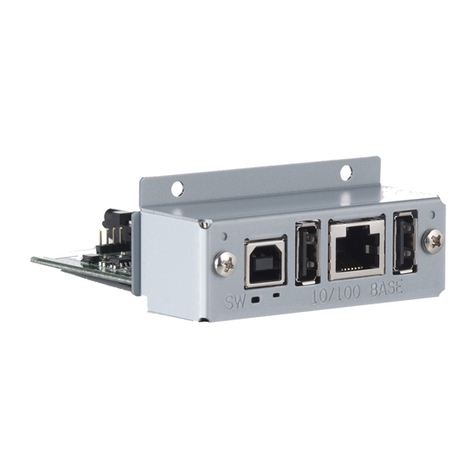
Star
Star IFBD-HI01X Replacement manual

Carrier
Carrier CSM Control operation and troubleshooting instructions
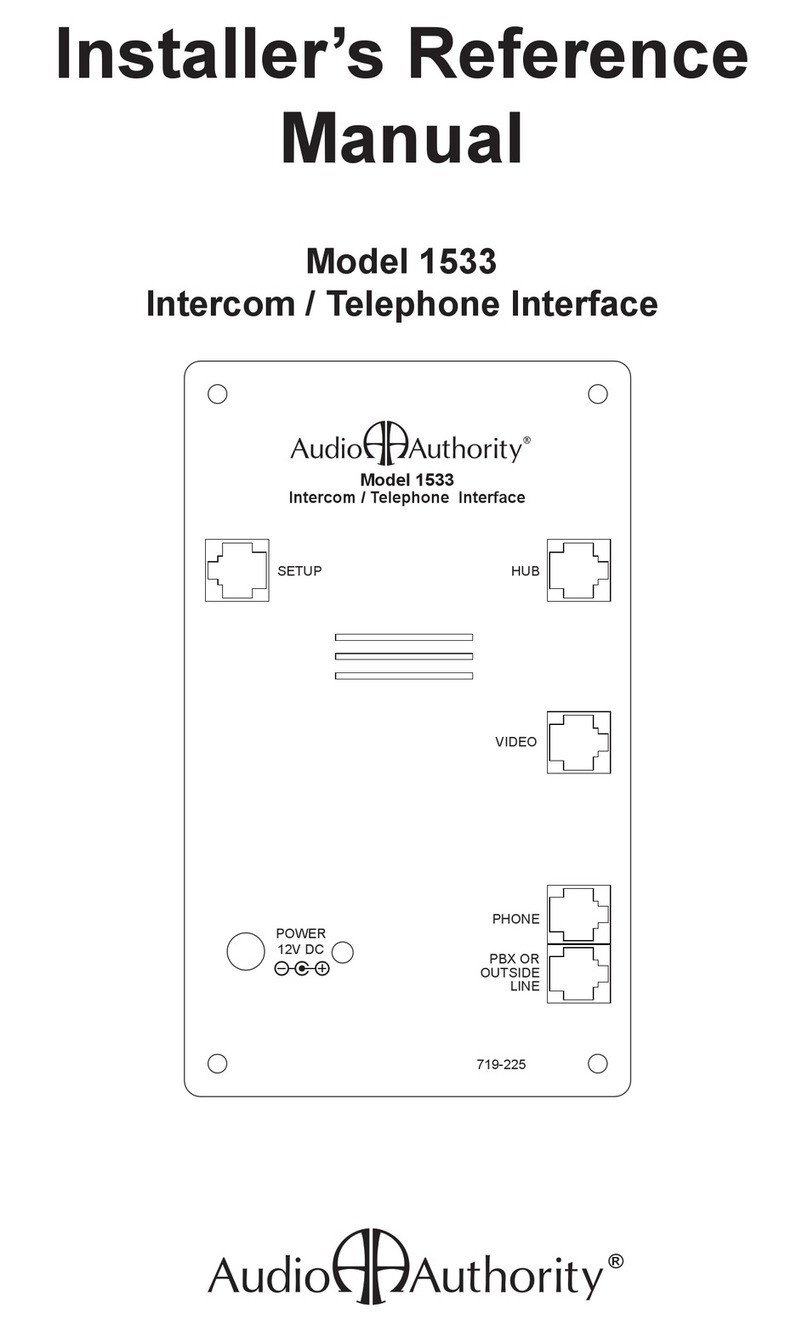
Audio Authority
Audio Authority 1533 Installer's Reference Manual
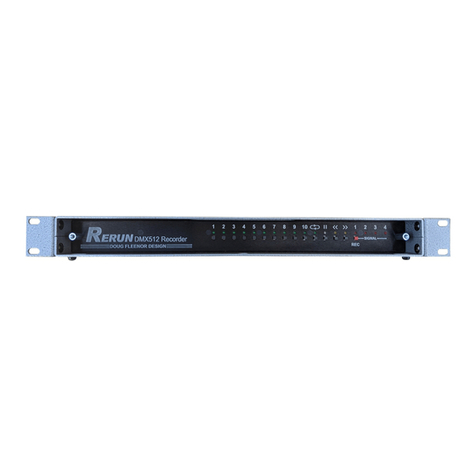
Doug Fleenor Design
Doug Fleenor Design RERUN Series owner's manual
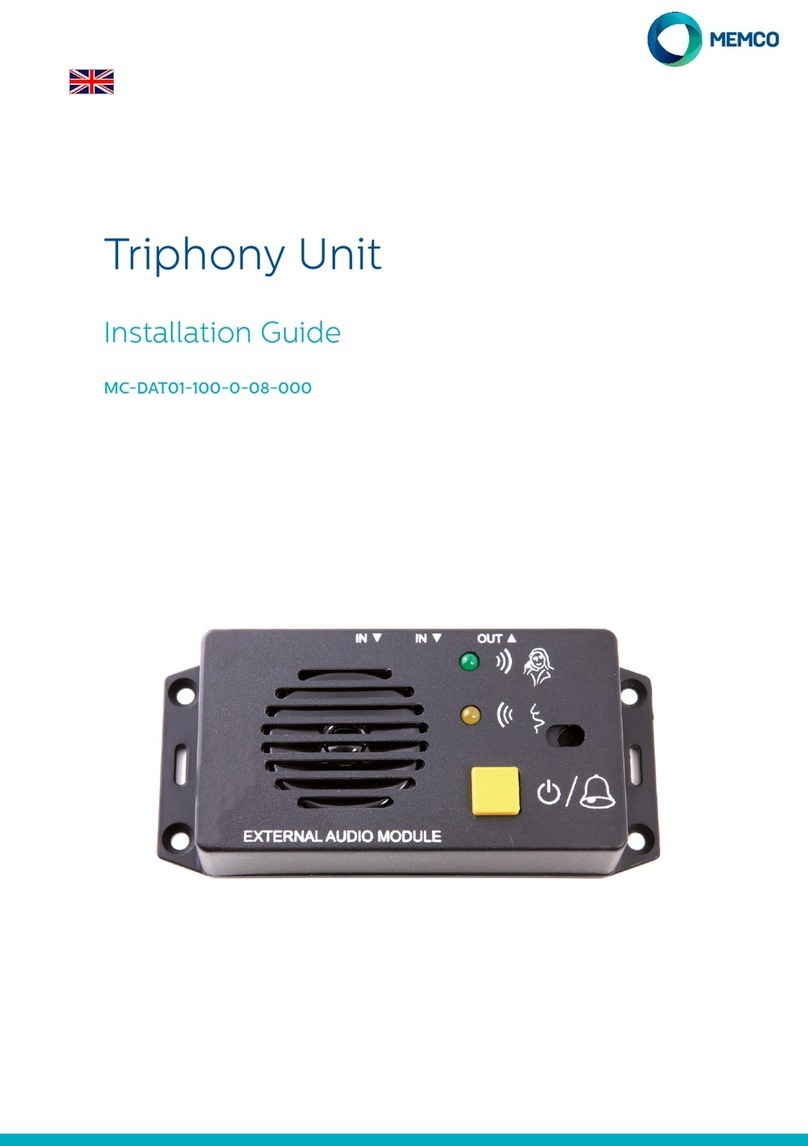
AVIRE
AVIRE Memco MC-DAT01-100-0-08-000 installation guide

Inter-m
Inter-m PS-6116 Operation manual
